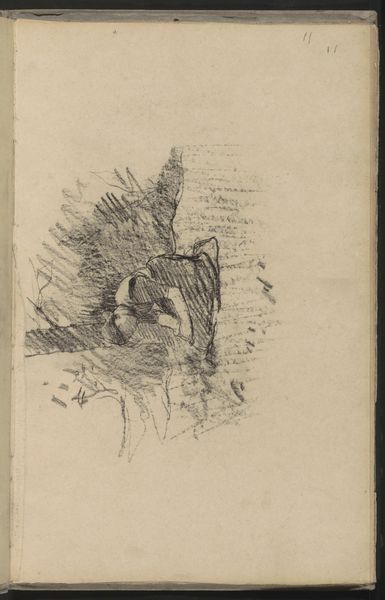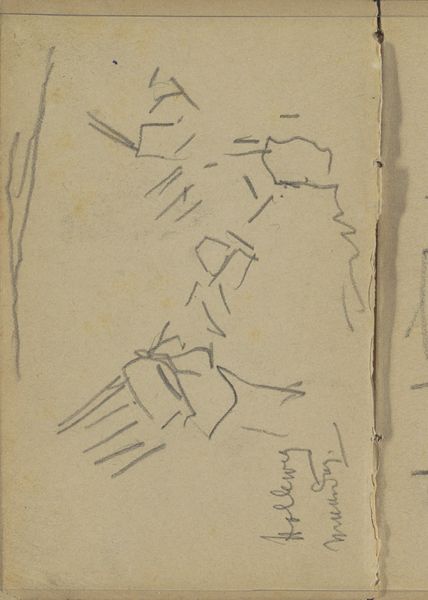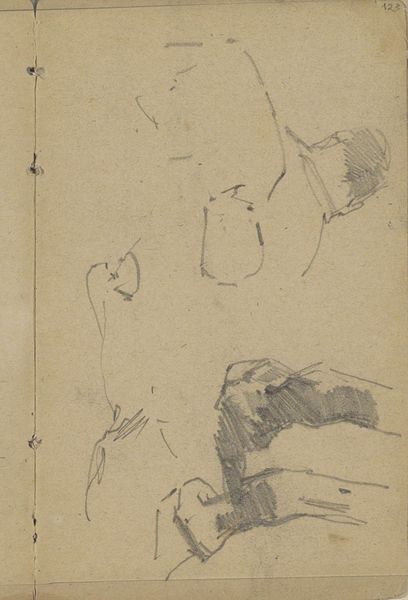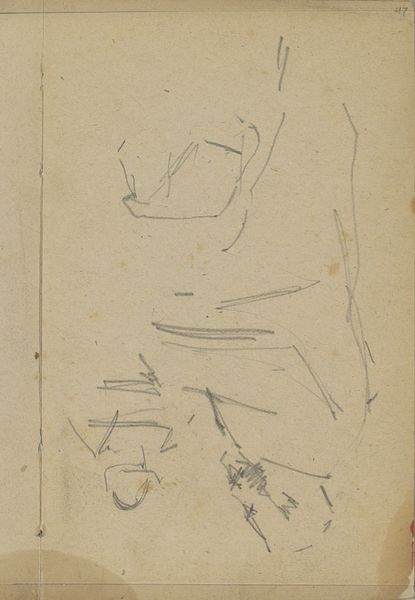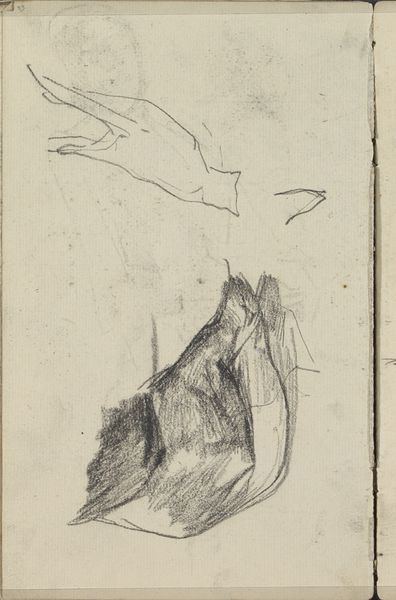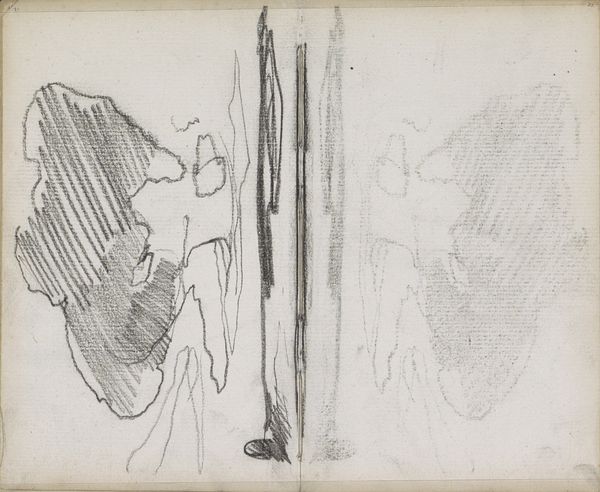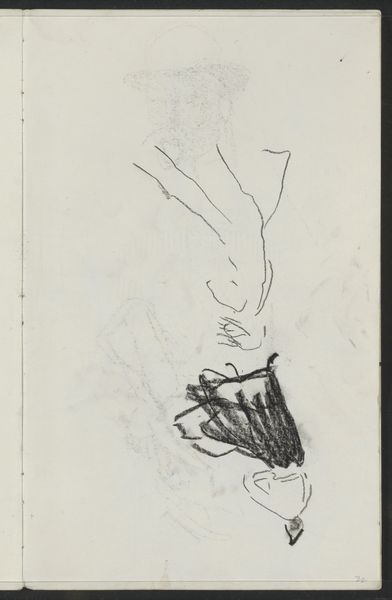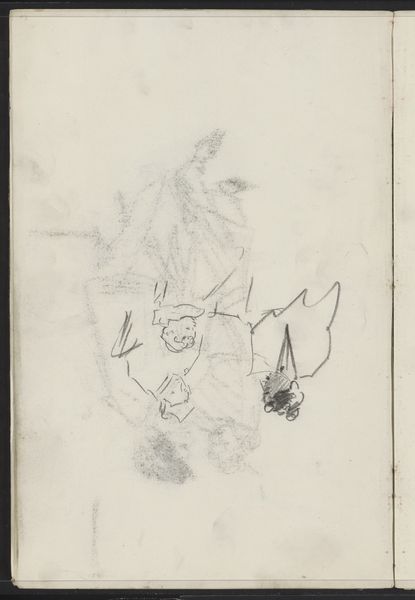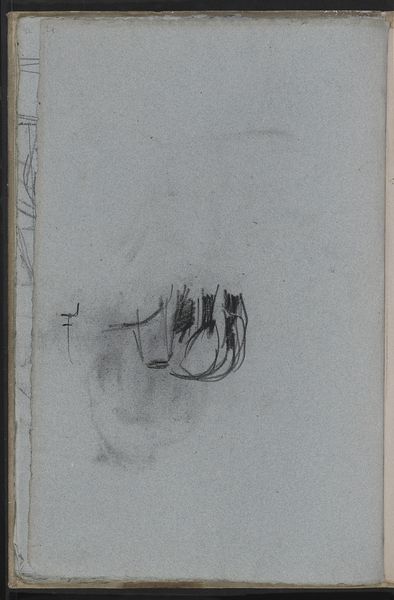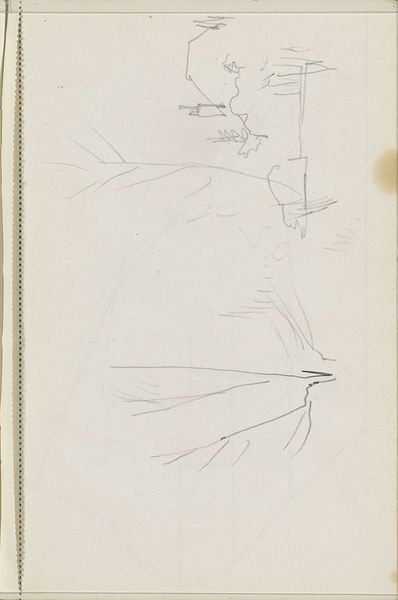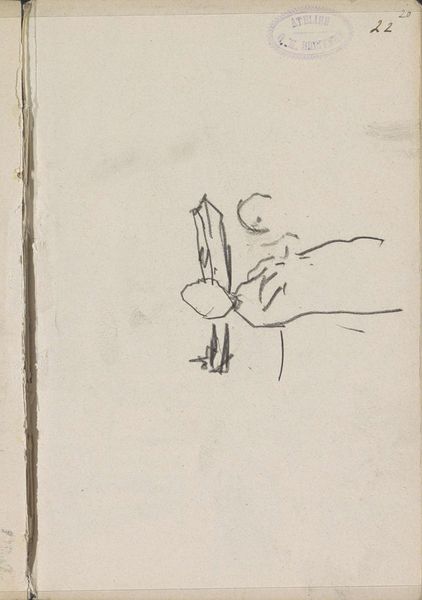
Copyright: Rijks Museum: Open Domain
Curator: This is “Studie,” a graphite and pencil drawing on paper by George Hendrik Breitner, likely created between 1880 and 1906. It’s part of the Rijksmuseum collection. Editor: My initial feeling is one of restless energy. The marks are so varied, light and dark, frantic and measured. It gives the impression of an artist's mind at work. Curator: Exactly! Breitner was known for capturing the bustling city life of Amsterdam. While abstract, these kinds of sketches served a real documentary purpose, influencing how people perceived modern urban experience. Breitner positioned himself outside the traditions of art and became more aligned to modern movements within Amsterdam. Editor: I can see the documentary aspect, but it's more than that. Look at how the artist utilizes a whole vocabulary of marks – hatching, scribbling, shading. Note that some of the marks clearly relate to shape, and others purely demonstrate tonal range. These contrasting techniques creates a tension that is quite stimulating. Curator: Yes, and the unfinished quality is key too. Breitner was challenging academic norms, embracing a more spontaneous approach that mirrored the transient nature of modern life. These weren't presentation drawings for the academy, rather preparatory sketches made *in situ*, often rapidly made. Editor: True, the visible structure contributes to its impact. Consider, if it were heavily rendered the piece would lose its vitality. But let’s not lose sight of how the marks contribute to its form: that concentrated rectangle on the lower left with dense strokes contrasts the fleeting nature of marks and lines elsewhere. The overall effect creates a unique push and pull that animates the entire sketch. Curator: Breitner sought authenticity through immediacy. It’s this unvarnished quality which resonates so profoundly. These studies offer a fascinating glimpse into the making of the broader art culture developing in the Netherlands at the time. It demonstrated a freedom which spoke against traditional academic constraint. Editor: Indeed, those dynamic lines against soft shading create visual tension that holds your eye. It feels less like a preparatory work and more of a testament to Breitner’s technique of mark making. Curator: For me, it highlights the shifts happening within the public role of art during that period and represents a change within Dutch society at large. Editor: Well, whatever its purpose or meaning, this sketch, raw and unfiltered, embodies an essential liveliness, making it truly unique.
Comments
No comments
Be the first to comment and join the conversation on the ultimate creative platform.
